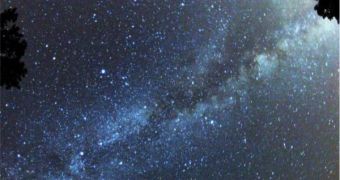Astronomers say that our galaxy, the Milky Way, collided with another similar formation over 2 billion years ago, an accident whose repercussions, they say, can still be identified today in the speed of the stars around our solar system. Mostly, the velocity differences are clearer if we look at the celestial bodies around us, as compared with those in the center of the galaxy. Regularly, their speed should have been similar, but large differences persist even now, after all this time.
According to researchers from the University of Strasbourg in France, led by expert Ivan Minchev, this kind of difference can only be explained by a past collision, when enormous gravitational pulls accelerated the outer arms of the Milky Way to a speed much higher than that of the disc in its middle. In order to test their hypothesis, Minchev and colleague Alice Quillen, from the University of Rochester, in New York, constructed a massive computer simulation, which accounted for billions of stars.
It's, by far, the largest such simulation ever attempted, and features several times the number of such celestial bodies other programs took into account. When they ran the program, it became clear to the researchers that the motion of the celestial body had been influenced by something more than just the regular gravitational pull of the massive hole in the center of our galaxy.
The team shares that a pattern of “ripples” emerged from the massive landscape they simulated, showing groups of stars traveling at the same high speed. This type of behavior, they state, could have only been triggered by the shock waves of a galaxy-merging process, which provided additional impulses for these stars, other than that of black holes or regular gravitational pulls between solar systems. In addition, Minchev maintains, the effects of these shock waves can be likened to the ripples generated when throwing a stone in a pond.
The scientist has submitted his new study to the journal Monthly Notices of the Royal Astronomical Society, for consideration and publication. His work could help clear a long-standing debate in astronomy, in which experts around the world have pondered on what caused seemingly unrelated groups of stars to travel and behave like they do.

 14 DAY TRIAL //
14 DAY TRIAL //